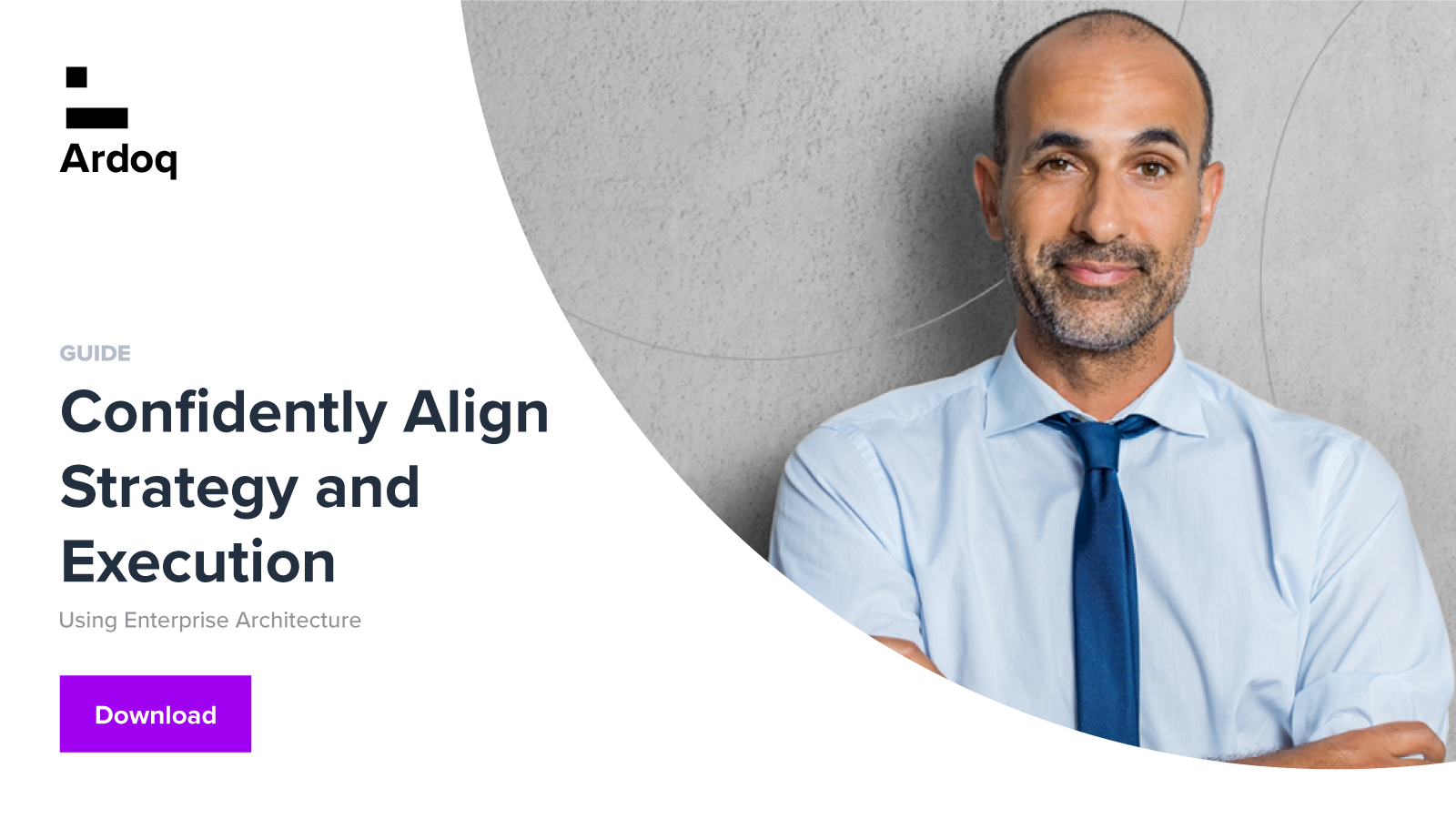Our customers are continually inspiring us with their approaches to tailoring our flexible platform for making better, more strategic initiatives and business decisions. We have ongoing dialogues with our customers to learn more about their experiences and challenges to deliver an even better product. We think it’s important that this knowledge is not only considered in our product development but also shared with other customers. After all, they may be facing similar challenges themselves.
The following is a summary of Jon Manning’s talk at SwitchOn Exchange Americas on 11 May 2023. Jon Manning is a Distinguished Architect at Republic Services with many years of experience. He has a concrete mission for his Enterprise Architecture team: to make EA work for the company’s stakeholders and the business.
Republic Services in a Nutshell
Republic Services is a leader in the environmental services industry, including the recycling and waste industries, and a member of the Dow Jones Sustainability Index. With nearly 40,000 employees, they serve over 13 million customers across North America, from residential customers to large oil and gas organizations. They consider themselves a partner for all environmental aspects: solid waste and recycling pick up all the way through to hazardous waste cleanup. The organization oversees America’s fifth-largest vocational fleet with over 16,000 vehicles.
Jon summarized why they chose Ardoq:
“Out of the tools that we evaluated, Ardoq was best suited for our needs, including the quality of the visualizations, the flexibility of the graph database that underpins Ardoq, and their API-first approach, which allowed us to build custom integrations if we needed to.”
–Jon Manning, Distinguished Architect at Republic Services
Strategic Initiatives to Demonstrate the Value of Enterprise Architecture
Sometimes, a small team may struggle to justify the cost of incorporating a new tool for strategic initiatives and planning. With the right tool, business decisions happen more quickly, including tailoring and creating relevant diagrams. To do more with less was a big part of their justification in the value proposition.
The business challenges they had felt insurmountable at the time. Once they found the right tool, however, they were able to tackle challenges head-on and initiate positive change. Some of the positive gains created from the challenges were:
1. Strategic Initiatives
The company had three major strategic programs underway. The first program focused on modernizing back-end systems, including finance, procurement, asset management, and billing. The second program implemented technology in trucks and dispatch operations through a cloud-native solution called Rise. The third program, internally called "customer zeal,” emphasized providing excellent digital experiences to customers through automated notifications, customer portals, and websites.
2. Implementing a New EA Tool
The company sought a technology solution to streamline its Enterprise Architecture processes. After evaluating various tools, they chose Ardoq for its dynamic visualizations, graph database flexibility, API integration capabilities, and scalability. The team was able to then:
- consolidate business capabilities
- create visualizations for data and analytics
- develop integration architectures
- customize diagrams with icons and images
3. Focus on Future Goals and Benefits
There was an incredible need to democratize and decentralize data maintenance and capture shifting resources to value-creating work. There were clear benefits for the company to focus on strategic work instead of tedious manual maintenance. The company aims to improve governance and expand contributors by involving the wider IT architecture and IT teams in managing data within Ardoq.
The team's priority was to save time with an Enterprise Architecture tool but also take advantage of the tool's ability to integrate into the rest of their enterprise, plus the extendibility and programmability they had within the platform and the tool's ability to grow with the team.
After purchasing Ardoq, the EA team quickly started planning to democratize the processes and ensure everyone in the company could contribute to the projects. The team used surveys and targeted broadcasts to gather information and validate data.
To level things up, they integrated with ServiceNow to enhance incident management, disaster recovery, and business continuity processes. The organization will incorporate information security applications and capabilities into Ardoq and leverage its data for new employee onboarding and department-specific presentations.
Overall, any EA team benefits from saving time, improving data visualization and communication, supporting decision-making, and aligning IT and business teams to implement strategy. The EA team at Republic was small, so working effectively made an even bigger impact.

4 Tips From Their Digital Transformation Journey
Several aspects of Ardoq helped propel success at Republic. Jon and his team have many valuable universal learnings that can be applied in other organizations looking to begin or improve their transformation initiatives. Here are some key benefits:
Consolidating and Centralizing Data
Ardoq allowed them to consolidate business capability spreadsheets and import the data into their system. They had a centralized graphical view of their business capabilities. This eliminated the need for multiple, hard-to-find Excel files. They created data and analytics technical capabilities in Ardoq, which they then related to current and future technologies. With this deliverable, they could use conditional formatting to highlight technology they could retire and see where technology might be underutilized. This meant more effective and optimized use of their IT/technology budget.
Visualization Capabilities
The flexibility and ease of customization of the graph database and the tool's API-first approach allowed them to build custom integrations when needed. The team could replace icons and images in the diagrams, enhancing the professionalism and quality of the visualizations. This made it easier to socialize information to key stakeholders.
Scenario Functionality
The usefulness of scenarios in Ardoq meant that the team could compare them to branches in the source code. Scenarios enabled them to make changes to data without impacting the current state of their architecture. This allowed for easy creation of what-if scenarios. The ability to branch off the current state and merge changes later was a powerful and useful feature for the team.
“Once you're happy with the changes as they are in your scenario, you then have the ability to merge those changes back into your main line to update your current state. So very powerful.”
Republic Services used scenario functionality to describe how they might be able to accomplish ideas brought to them by their sustainable innovation team. The ability to quickly build what-if scenarios with real data without affecting the organization’s current state was really powerful.
Integration and Data Visibility
The integration capabilities in Ardoq meant that the team could see across data silos and avoid creating additional silos. They could integrate data from other sources, such as the ServiceNow system, to enhance the application and architecture knowledge hub. By visualizing key resources involved in projects and applications, they highlighted the importance of people in their work. After all, without a particular role fulfilling a vital function, projects can quickly face bottlenecks or underutilized resources.
“Our ideal state is to open up access to the wider IT architecture team and the wider IT team in general to manage certain pieces of data.”
Navigating Digital Transformation with Strategic Initiatives
Republic Services has successfully consolidated data, provided visualizations, and supported scenario modeling. They have impressed stakeholders with their ability to facilitate integration and enhance data visibility, and all of this contributes to the value and overall effectiveness of their enterprise architecture efforts in strategic initiatives.
Jon advises: “The technology you choose to help is only as good as how you're using it. Really think about what is driving the need at your organization. Integration is important, as you likely won't own all the data, but will want the unique ability to see across those data silos. Without the integration capabilities, you risk creating yet another silo. Be agile: find those initial use cases that are right for your organization. The use cases justify the investment and can show the value of that investment early.”
Republic Services significantly saved time and resources. You can, too. Learn more about transforming strategy into execution:
